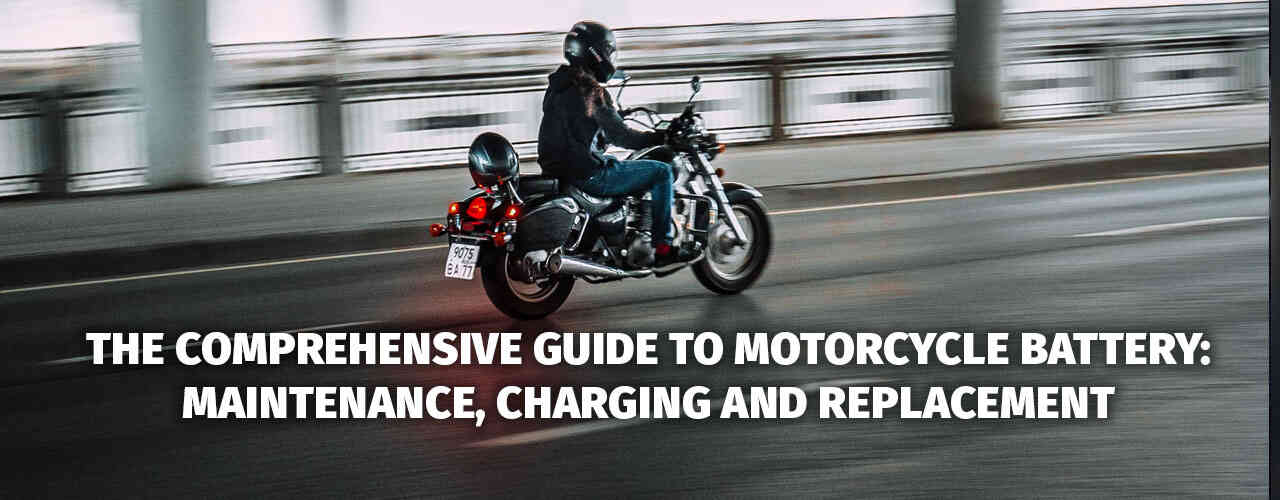Motorcycles, like any mechanical device, require regular maintenance to operate at peak performance. Central to a motorcycle's electrical system is the battery, a fundamental component that ensures your bike starts every time you turn the key. Proper maintenance, charging, and eventual replacement of the battery are essential to keeping your motorcycle reliable and in top condition.
1. Understanding the Importance of the Motorcycle Battery
The battery is the heart of the motorcycle's electrical system. It powers essential components like the lights, horn, and ignition system. Without a healthy battery, a motorcycle is just a beautiful piece of art, incapable of coming to life.
2. Types of Motorcycle Batteries
Motorcycles commonly use two types of batteries:
Lead-Acid Batteries: These are traditional batteries filled with a liquid electrolyte solution. They are affordable but require regular maintenance.
Absorbent Glass Mat (AGM) Batteries: AGM batteries are sealed, maintenance-free, and have a longer lifespan than lead-acid batteries. They are more expensive, but their efficiency and longevity make them a popular choice for many motorcyclists.
3. Battery Maintenance
Regular Checks: At least once a month, inspect the battery terminals for signs of corrosion or loose connections. Clean the terminals using a wire brush and apply a thin layer of dielectric grease to prevent corrosion.
Electrolyte Levels: For lead-acid batteries, check the electrolyte levels. If they are low, top them up with distilled water. Do not use tap water as it may contain minerals harmful to the battery.
Charge Monitoring: It's vital to keep the battery charged, especially during prolonged periods of inactivity. A motorcycle battery can lose its charge when left unused, leading to a shortened battery life.
4. Charging Your Motorcycle Battery
Motorcycle batteries tend to discharge when the bike isn't used for an extended period. Here are the steps to properly charge a motorcycle battery:
Remove the Battery: Disconnect the battery from the motorcycle to ensure safety during charging.
Connect the Charger: Attach the charger's red clip to the battery's positive terminal and the black clip to the negative terminal.
Select the Correct Mode: Use a slow or 'trickle' charge mode if available. Charging slowly extends the battery's life.
Monitor the Charge: Do not overcharge the battery. Most modern chargers will indicate when the battery is fully charged.
Reinstall the Battery: Once charged, disconnect the charger and reinstall the battery.
5. Recognizing When to Replace the Battery
Despite the best maintenance, batteries have a limited lifespan. It's essential to recognize the signs that it's time for a replacement:
- Difficulty Starting: If your motorcycle struggles to start, the battery might be nearing the end of its life.
- Dimming Lights: Dim headlight and taillights can indicate a weak battery.
- Age: A typical motorcycle battery lasts 3-5 years. If yours is older, consider replacing it.
- Physical Damage: Check for bulges, cracks, or leaks in the battery case.
6. Replacing the Motorcycle Battery
Replacing a motorcycle battery is straightforward:
Purchase the Correct Battery: Ensure the new battery is compatible with your motorcycle's specifications.
Safety First: Wear gloves and safety goggles. Keep the work area well-ventilated.
Removal: Disconnect the negative terminal first, followed by the positive. Remove the old battery.
Install the New Battery: Place the new battery in the holder. Connect the positive terminal first, followed by the negative.
Dispose of the Old Battery: Take the old battery to a recycling center or an auto parts store. Many offer recycling services.
Conclusion
A motorcycle's battery is its lifeblood. Proper maintenance, timely charging, and recognizing when to replace are all crucial aspects of ensuring your motorcycle remains reliable. By adhering to these guidelines, riders can enjoy countless hours on the road, knowing their trusty steed won't let them down due to battery issues.




